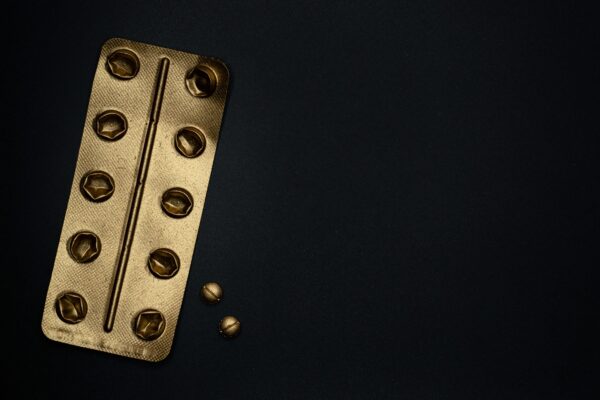Bad news, guys, the question “How to know if ED is Physical or Psychological?” cannot be resolved with a simple psychological test.
But, don’t panic.
We can use one objective criterion.
There is one easy, reliable method.
It’s completely free and you can easily do this check in your bedroom.
What can science tell us about normal erectile function in healthy men?
- Nocturnal Erections
- How to know if ED is Physical or Psychological: Super easy hardness factor self-test
- Nocturnal Penile Swelling Test /NPT Test
- Mental ED
- FAQs: How to Know if ED is Physical or Psychological
- Question: What are the main causes of erectile dysfunction (ED)?
- Question: How can I tell if ED is caused by physical issues?
- Question: What are the signs of psychological ED?
- Question: Can a combination of physical and psychological factors cause ED?
- Question: Should I consult a doctor to determine the cause of ED?
- Question: Are there lifestyle changes that can help improve ED?
Nocturnal Erections
Nocturnal penile tumescence is a spontaneous erection of the penis during sleep or when waking up.
All healthy males get erections during their sleep.
This happens every night without exception.
Each episode lasts around half an hour, although the penis is not fully erect all the time.
All healthy men of any age have these night-time erections three to five times a night.
They occur in cycles, separated by one to two hours.
Most coincide with the REM (rapid eye movement) stage of sleep, the period during which dreaming occurs.
But these erections are totally nonsexual in nature; even infants have them.
I don’t want to create the false impression that a 20-year-old sleeping penis does the same thing as its 60-year-old counterpart.
The total duration of nocturnal erections is age-related, longest during the teenage years, after which they gradually decline.
But feeling-good men in their ’80s still get three or four erections at night.
The average penis of a healthy man is in a state of erection for more than 100 minutes a night.
Urologists still do not know the purpose of nocturnal erections or their role in the sleep process.
Fortunately, however, they are an important diagnostic tool.
Conversely, if the patient does not have normal sleep erections, a doctor may conclude that some physical condition is impeding the process, and the diagnosis is organic impotence, also called physical erectile dysfunction.
How to know if ED is Physical or Psychological: Super easy hardness factor self-test
If a man has a normal erection during sleep, doctors may assume that he is anatomically and physiologically capable of having a good erection during sex.
Doctors can then safely conclude that the weakness of his penis is not due to any organic disease; rather it is of psychological origin.
If you happen to wake up in the middle of the night and find that your penis is hard, or if you have an erection when you wake up in the morning (a condition often referred to as morning wood or standing urine because it is often accompanied by the urge to urinate), you have the luxury of knowing that your penis is in good working order.
Nocturnal Penile Swelling Test /NPT Test
Urologists, however, have a more convincing way to make this determination: a diagnostic procedure called the nocturnal penile swelling test (NPT).
To perform this test doctor gives the patient a simple take-home kit consisting of a state-of-the-art gadget with loops that look like a small pair of blood pressure cuffs. One loop is placed around the penis at the base and one just under the glans.
Comfortable enough to sleep with, but secure enough not to fall off, the gauges are attached by wire to a meter hooked up to a polygraph printer, just like those used in lie detector tests.
If the patient’s penis enlarges as it would with a normal nocturnal erection, the pressure inside the cuffs increases. This change registers in graph form on the recording device.
This device can actually measure the increase in diameter and the degree of rigidity of the penis.
It can also measure the frequency and duration of the erections.
This simple device tells me whether a patient is physically capable of achieving a satisfactory erection.
Feeling better after the NPT test
Regardless of the outcome of the test, many guys invariably feel better after using the kit because now, at last, the mystery and torment have been solved.
These guys are either relieved to discover that they can, in fact, have an erection and nothing is medically wrong, or they are relieved to find out that the problem is physical and not mental.
Once your doctor knows the problem is physical, he can proceed to evaluate the actual nature of the disorder and outline an appropriate treatment plan.
Erectile dysfunction test – homemade version
Before we had sophisticated monitoring devices, Dr. Danoff, a world-class urologist, relied on a simple, homemade procedure that patients who are intimidated by machines can still use.
He describes this method in his brilliant book “The Ultimate Guide to Male Sexual Health“:
Take a roll of postage stamps, and wrap it around your penis before you go to sleep (keeping in mind the escalating cost of postage). If when you awaken in the morning the perforation between the stamps is torn, there is a good chance you had an erection during the night. The postage stamp test, though scientifically crude, is fairly reliable.
If NPT test failed, what to do
If the patient fails to get an adequate nighttime erection, proceeding with a complete urologic evaluation is the next step.
Thanks to some remarkable medical advances, men who suffer from physical disorders can be treated.
In the old days, such men might have spent years in psychotherapy while their self-esteem and penis power plummeted to even greater depths.
The key to a successful treatment plan is to obtain an accurate diagnosis, and in most cases, urologists can determine the cause right in their offices.
Organic or so-called Physical Erectile Disorders fall into three basic categories:
- Neurological,
- Vascular
- Hormonal
Studies say that physical causes of erectile dysfunction are responsible for a relatively small percentage of cases, while psychological erectile dysfunction has something to do with the mind. Around 80% to 90% of erectile dysfunctions are physiological in nature.
Mental ED
Some of the most common psychological causes of erection problems are chronic work-related stress, financial problems, relationship or marital issues, sexual anxiety (worrying about having an erection actually hinders erection), guilt, clinical depression, feelings of self-pity and self-inadequacy, and loss of sexual interest in your partner.
Read more about Psychological Erectile Dysfunction
- Morales A, Buvat J, Gooren LJ, et al. Endocrine aspects of sexual dysfunction in men. J Sex Med.
- Wheeler MJ. Measurement of androgens. Methods Mol Biol 2006.
- Vermeulen A, Verdonck L, Kaufman JM. A critical evaluation of simple methods for the estimation of free testosterone in serum. J Clin Endocrinol Metab 1999.
- Morley JE. Clinical diagnosis of age-related testosterone deficiency. Aging Male 2000.
- Heineman, LAJ, Saad F, Thiele K, et al. The aging male’s symptom rating scale: Cultural and linguistic validation into English. Aging Male 2001;4:14-9.
- Buvat J, Lemaire A, Buvat-Herbaut M, et al. Hyperprolactinemia and sexual function in men, 1985.
- Althof SE, Leiblum, SR, Chevret-Measson M, etal. Psychological and Interpersonal Dimensions of Sexual Function and Dysfunction. J Sex Med 2005.
- Seidman SN, Roose SP, Menza MA, et al. Treatment of erectile dysfunction in men with depressive symptoms: results of a placebo-controlled trial with sildenafil citrate. Am J Psychiatry 20010.
- Costabile RA, Steers WD. How can we best characterize the relationship between erectile dysfunction and benign prostatic hyperplasia? 2006.
FAQs: How to Know if ED is Physical or Psychological
Question: What are the main causes of erectile dysfunction (ED)?
Erectile dysfunction can have physical causes such as heart disease, diabetes, or hormonal imbalances, as well as psychological causes like stress, anxiety, or depression.
Question: How can I tell if ED is caused by physical issues?
Physical ED often develops gradually and is consistent, even during masturbation or when waking up. It may also be accompanied by other health symptoms, such as fatigue or pain.
Question: What are the signs of psychological ED?
Psychological ED is often situational and may occur during specific moments of stress or performance anxiety. It can also vary depending on your emotional state or partner.
Question: Can a combination of physical and psychological factors cause ED?
Yes, many cases of ED involve both physical and psychological factors. For example, a physical issue might lead to anxiety, which can worsen the condition.
Question: Should I consult a doctor to determine the cause of ED?
Yes, consulting a healthcare professional is essential. They can perform tests to identify physical causes or recommend therapy for psychological factors.
Question: Are there lifestyle changes that can help improve ED?
Yes, regular exercise, a healthy diet, stress management, and avoiding smoking or excessive alcohol can help improve ED caused by both physical and psychological factors.
How long can the average man stay erect [and how to stay longer]






One thought on “How to know if ED is Physical or Psychological”